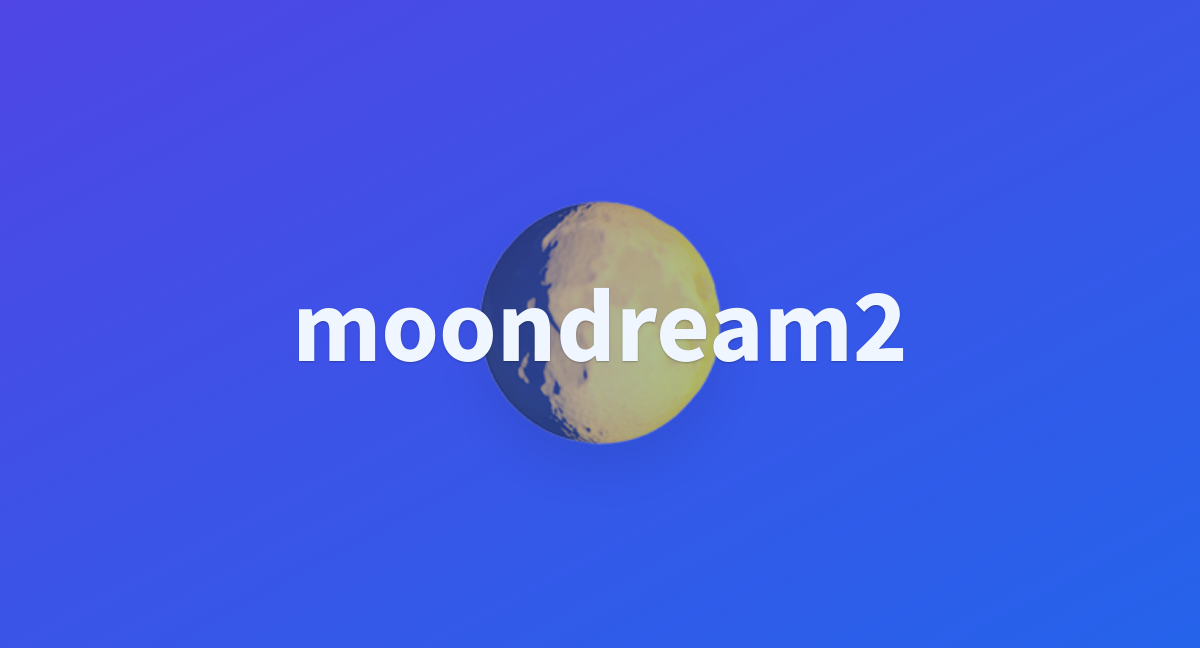
June 26, 2025
Implementing MoonDream 2.0 for Visual Language Tasks
Implementing MoonDream 2.0 for Visual Language Tasks
Imagine an AI that could read, interpret, and describe images. Or imagine querying an AI a question about a photo and getting a thoughtful response that exactly matches the text to the image? MoonDream 2.0 revolutionizes how machines interpret visual and textual information. So, do you wanna explore this latest release? Join me and see how to use MoonDream 2.0 for some intriguing visual language tasks!
What is MoonDream 2.0?
MoonDream 2.0 is a multimodal model that bridges picture and text interpretation. Imagine giving your AI the capacity to read and understand words. MoonDream 2.0 is accurate at creating captions, answering questions, and finding images from text queries.
But what makes it different? It uses cross-attention to better understand text-image relationships. Instead of processing text and graphics separately, it combines them for additional meaning. It is like the AI can "see" and "read" text and images.
Setting Up the Environment
Set up MoonDream 2.0's environment before you start the coding. Not to worry; it is simple.
Python 3.9+, torch, transformers, and Pillow are required to install. These are very important for model loading and image manipulation. First install these important python packages using this command:
pip install torch transformers PillowGet MoonDream 2.0 once your working environment is ready. Make sure you have an API or direct download if accessible. We are ready to create something fantastic!
Implementing MoonDream 2.0 for Visual Language Tasks
After setting up, let's utilize MoonDream 2.0 for some exciting visual language exercises.
Image Captioning Example
Start with image captioning. MoonDream 2.0 can create an informative description for an image. Here's how to implement this popular use case:
from transformers import MoonDreamForImageText
from PIL import Image
import requests
# Load MoonDream 2.0 model
model = MoonDreamForImageText.from_pretrained("moondream2.0")
# Image input
image = Image.open(requests.get("image_url", stream=True).raw)
# Generate caption
caption = model.generate(image)
print(f"Caption: {caption}")This model captions a picture based on its contents. It is like having an AI-powered photography assistant that captures and narrates moments.
Visual Question Answering (VQA) Example
Now it's time to move to Visual Question Answering. The model answers image-related queries here. Suppose , you might upload a bike-riding photo and ask, (What is this person doing?) The code to do this is:
# Image input and question
image = Image.open("path_to_image.jpg")
question = "What is the person in the image doing?"
# Generate answer to the VQA task
answer = model.answer_question(image, question)
print(f"Answer: {answer}")This task is exciting since the model must understand the picture, your query, and context to respond back. Imagine talking to your AI about what it "sees", how exciting it is.
Text-based Image Retrieval Example
Let's try text-based image retrieval. This example lets the model search and find pictures according to the given text. When asked to (find a picture of a sunset over the ocean), the model returns related images. Here's the code for that:
text_query = "Find an image of a sunset over the ocean"
# Retrieve image related to text query
image_results = model.retrieve_image(text_query)
image_results.show()This is a nice example of how MoonDream 2.0 may help you create natural language image search systems. It works well for image search engines and visual content discovery in large datasets.
Enhancing Model Performance and Customization
MoonDream 2.0 is strong by default, but you may wish to customize it. For specific applications like medical imaging or product cataloging, you may train the model on your own photographs and descriptions. Fine-tuning improves model performance and accuracy for your requirements.
Here's a sample of how to customize MoonDream 2.0 for VQA using a custom dataset:
from transformers import Trainer, TrainingArguments
# Prepare training dataset (Image-Text pairs)
train_dataset = load_custom_vqa_dataset()
# Set up training arguments
training_args = TrainingArguments(
output_dir="./results",
per_device_train_batch_size=4,
num_train_epochs=3,
)
trainer = Trainer(
model=model,
args=training_args,
train_dataset=train_dataset,
)
# Train the model
trainer.train()This is just the kick off, but it shows you how to tweak the model to make it even better at certain tasks, especially if your dataset has unique patterns or features.
Conclusion
That's it! My MoonDream 2.0 guide covered image captioning, visual question answering, and text-based image retrieval. MoonDream 2.0's multimodal potential is intriguing and offers up new creative and technological applications.
But this is only the start! You may enhance these ideas by combining MoonDream 2.0 with other AI models, building complex interactive apps, or experimenting with various input data. Build a smart assistant, search engine, or content production tool; but you still have unlimited options to try.
Now that you have the tools, experiment; your multimodal AI awaits!
1.1k views
